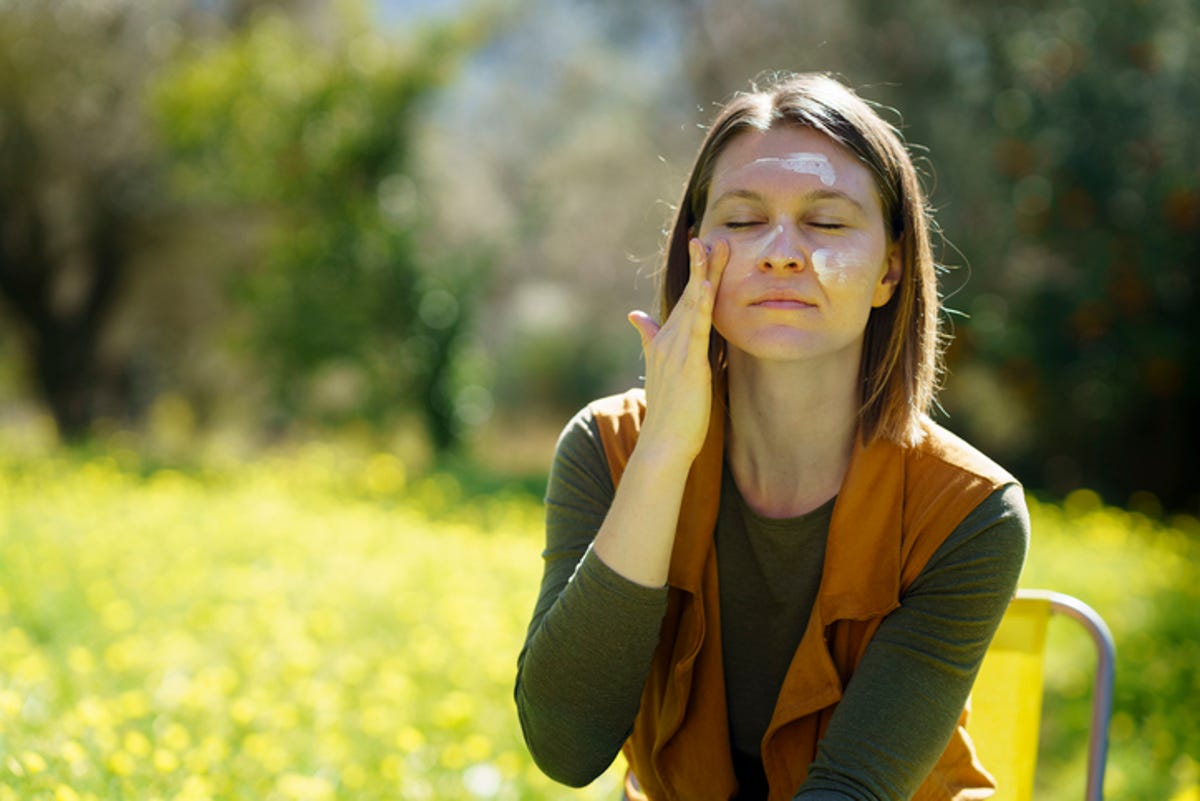10 Sunscreen Myths to Stop Believing This Summer

[ad_1]
There are many misconceptions about sunscreen – what type you need, how much you should apply and when you should wear it. But believing everything you hear can bring bad news for your skin. When it comes to protecting the skin from damaging sun rays which can lead to sun poisoning, blisters and cancer, sunscreen is your best line of defense.
It’s important to get it right this summer. Let’s separate fact from fiction and debunk some common myths about sunscreen so you can protect your skin.
Read more: The best sunscreen to protect your skin
Top 10 Sunscreen Myths
1. All sunscreens are the same
Yes, the purpose of all sunscreens is to protect your skin from sun damage. But each product works differently depending on the ingredients and the degree of sun protection.

There are generally two broad categories of sunscreen — chemically and physically. Chemical sunscreens contain avobenzone and oxybenzone, which absorb the sun’s rays and turn them into heat. Physical sunscreens, also known as mineral sunscreen products, have ingredients like zinc oxide and titanium oxide that reflect the rays. The ingredients in a sunscreen determine how it protects your skin from the sun.
2. Higher SPFs are better
You would think that the higher the number, the more protection you get. But this is not always the case. SPF 50 blocks approximately 98% of UV rays. SPF 100 only blocks 99%, a marginal difference. I’m not saying you shouldn’t get SPF 100, just keep this in mind no sunscreen can give you complete protection against the sun. Higher SPFs tend to give people a false sense of security against the sun, leading to skin damage.
What does the number on your sunscreen bottle mean? SPF stands for sun protection factor and measures how long the sunscreen protects against UVA and UVB rays. This metric is based on how long does it take for your skin to burn in the sun without protection. Say it takes 30 minutes. If you apply SPF 30, it will take 30 times longer — a total of 300 minutes.
I caution that these numbers are determined in a lab, with a perfect application that doesn’t account for things like sweat, skin oils, or accidental product wipes. The American Academy of Dermatology recommends the use of broad-spectrum, SPF 30 or higherwith reapplying every 2 hours.
3. Makeup with sunscreen is all you need to protect your face
Using moisturizer or makeup with SPF included is a great way to add more sun protection. But it is not enough to provide adequate protection from the sun. When testing, skin care companies are testing with thick layers of the SPF determination product. In practice, you probably won’t get all the SPF on the bottle if you only apply a thin layer of the product.
There is too much variation in how people wear makeup to say that it is enough. Makeup with SPF is a nice addition, not a replacement for sunscreen.
If you’re wondering how the hell you’re going to apply sunscreen after you’ve put on your makeup, you can either dab your sunscreen on top of your makeup with a makeup sponge or buy a powder sunscreen like Colorscience Brush-On Sunscreen.
Read more: The best sunscreen for the face
4. Waterproof sunscreen does not need to be reapplied
Tell me if this sounds familiar to you from childhood: Your mom would lather sunscreen on you in the pool and make you sit there until it dried before jumping in the water. It was the longest wait of your life.
Turns out your mom was right. Here’s the thing about waterproof sunscreen – it’s not really waterproof. According to the American Academy of Dermatology, there is there is no such thing as a waterproof sunscreen. Sweat and water will always wash sunscreen off the skin.
That’s why it’s important to wait 10 to 15 minutes before entering the water after applying sunscreen. You should reapply it every 2 hours, even if you haven’t been in water.

5. Dark skin doesn’t need sunscreen
Melanin offers some natural protection from the sun by diffusion of UV rays. However, people with darker skin can still develop wrinkles, hyperpigmentation, sunburn and skin cancer. A study published in the Journal of the American Academy of Dermatology found that people with darker skin tends to have lower survival rates for skin cancer, which reinforces the need for everyone to wear sunscreen. It is important to note that people with darker skin tends to have lower survival rates because they are often not diagnosed, not only because of the color of their skin.
6. You should only wear sunscreen when it’s sunny
Some people think that sunscreen is not necessary because the sun is behind the clouds. But let me ask you what is a cloud? If you guessed that water vapor is suspended in air, then you are correct. While clouds can reduce the sun’s rays reaching your skin, they are not significant enough to block them completely. Above 90% of UV rays pass through through clouds. Even if it’s cloudy, it’s best to wear sunscreen.
7. You will become vitamin deficient if you wear sunscreen
Vitamin D is the essential vitamin it forms when the protein in our skin reacts to UVB rays from the sun. Essentially, we need sunlight to make the necessary amount of vitamin D that our body allows absorb calcium and phosphorus. No sunscreen blocks 100% of the sun’s rays, even if it says 100 SPF on the package. You’ll still get roughly 2% to 3% UVB rays, enough for you the body to produce vitamin D.
8. A tan is OK as long as you don’t burn
Safe foundation tans are a myth. The skin is protected from further damage from UV rays by darkening. A base tan does not protect you from the sun and is a sign of skin damage.
UV radiation is a human carcinogen. Even if you don’t have a sunburn, unprotected sun exposure increases your chance of developing skin cancer. Establishing a basic tan with a session at tanning beds still harm your skin.

9. Sunscreen is bad for your skin
The conversation about sunscreen safety mainly concerns oxybenzone and other chemical ingredients in some sunscreens. There is an ongoing debate about the health risks of use of chemicals in sunscreen products. Although the FDA has not found significant evidence that chemical sunscreens are harmful, more research is needed to conclude. A study published in JAMA Network found that 6 of the 13 ingredients in chemical sunscreen that the FDA is currently considering are absorbed and detectable in the bloodstream for up to three weeks after a single administration.
Additionally, some sunscreens can irritate sensitive skin or cause an allergic reaction due to ingredients such as fragrances. You can avoid this by choosing a sunscreen formulated for sensitive skin.
10. Sunscreen doesn’t run out
If you’ve ever used old sunscreen and sprayed a separated mixture on your hand, you know first hand that sunscreens expire. Over time, the ingredients break down and become less effective.
This doesn’t mean you have to buy sunscreen every year. According to the FDA, sunscreen is mandatory to maintain the same efficiency for at least three years. So you can use the same tube of sunscreen for several years; just pay close attention to the expiry date which is indicated on the bottle. You should not store your sunscreen in direct sunlight or where it may get too hot. It is not a good idea to store it in your car.
Too long; didn’t read?
There are many myths floating around about sunscreen, many of which can lead you to make the wrong decision about your skin. The bottom line is that sunscreen should be an essential part of everyone’s daily routine, especially if you’re going to be spending time outside. Reapply every 2 hours.
[ad_2]




